Search engines aren't what they used to be. Once upon a time, ranking on page one meant clicks, traffic, and conversions.
Now? AI-driven search engines are changing the game, serving up direct answers, summarizing content, and sometimes bypassing websites entirely. Welcome to the zero-click era, where AI search optimization isn't just an option—it's survival.
So, how do you make sure your content isn't lost in the AI shuffle? How do you rank in AI-driven search results when algorithms are rewriting the rules? Let's break it down.
The AI Search Revolution Is Already Here

Remember when success meant getting to position one on Google? Those days are quickly fading.
With the rise of AI-powered search experiences like Google's Search Generative Experience (SGE) and similar AI integrations across search engines, we're witnessing a fundamental shift. Search engines now analyze queries with unprecedented understanding of intent, synthesizing information from across the web to provide direct answers—often without users needing to click through to websites.
This evolution has led to what industry experts call "zero-click searches," where users get their answers directly in the search results without visiting any websites.
Let's be honest: this is a massive disruption for businesses that have invested heavily in traditional SEO strategies focused solely on driving traffic. When users don't need to click to get information, how do you capture value from search?
Understanding Zero-Click Search Features
Before we dive into strategies, let's understand what we're dealing with. Zero-click content appears in several formats:
- Featured snippets: Concise answers to specific questions displayed prominently at the top of search results
- Knowledge panels: Quick facts and information about entities like businesses, people, or concepts
- People Also Ask (PAA) boxes: Expandable sections showing related questions and their answers
- AI overviews: AI-generated summaries pulling information from multiple sources
- Image and video results: Visual answers displayed directly in search
These features are designed to enhance user experience by delivering information as efficiently as possible. They're also increasingly powered by sophisticated AI that understands context, relationships between entities, and semantic meaning.
The Impact on Your Traffic and Visibility
If you've noticed declining organic traffic despite maintaining or improving rankings, you're not alone. Studies suggest that almost 60% of Google searches now end without a click to any website.
But here's the reality check: this trend isn't reversing. It's accelerating.
The good news? This shift creates new opportunities for brands that adapt quickly. By optimizing specifically for AI-powered search results, you can maintain visibility and capture value even in a zero-click environment.
AI Search Optimization: A New Approach

Adapting to AI search requires expanding your SEO strategy beyond traditional metrics like rankings and traffic. Here's how to pivot your approach:
1. Optimize for Featured Snippets and Direct Answers
Featured snippets appear in position zero, above traditional organic results, and they're a prime target for AI extraction.
Actionable strategies:
- Structure content as direct answers to questions: Format your content to provide clear, concise answers to common questions in your industry
- Use proper HTML formatting: Utilize <h2>, <h3> heading tags for questions and organize answers in paragraphs, lists, or tables
- Target question-based queries: Identify and optimize for questions your audience is asking
- Keep answers concise: Aim for 40-60 words in paragraph featured snippets, as this is the average length typically displayed
- Implement FAQ schema markup: This helps search engines understand and extract question-answer pairs from your content
Example: If you're a SaaS company selling project management software, create SaaS content marketing strategies specifically answering questions like "How to improve team productivity with project management tools" or "What features should enterprise project management software include?"
2. Develop Comprehensive Entity Optimization
AI search engines rely heavily on entity recognition—understanding people, places, concepts, and the relationships between them.
Actionable strategies:
- Create entity-rich content: Clearly define important concepts, include related entities, and establish connections between topics
- Implement schema markup: Use relevant schema types to help search engines understand your content's context and subject matter
- Build topical authority: Develop content clusters around core topics to signal expertise and comprehensive coverage
- Maintain consistent entity information: Ensure your brand information is consistent across the web, especially in knowledge graph sources like Wikipedia, Wikidata, and social platforms
3. Focus on User Intent and Conversational Queries
AI search excels at understanding natural language and conversational queries, especially as voice search continues to grow.
Actionable strategies:
- Target long-tail, conversational keywords: Optimize for how people actually ask questions rather than just keyword fragments
- Create content for different intent stages: Map content to the full spectrum of informational, navigational, and transactional queries
- Use natural language in your content: Write conversationally, as if answering someone's questions directly
- Address follow-up questions: Anticipate and answer related questions users might have after their initial query
For example, instead of just targeting "CRM software pricing," create content that answers "How much does CRM software cost for a team of 10?" and follow up with related questions like "What factors affect CRM pricing?" and "Are there hidden costs with CRM implementation?"
4. Design a Zero-Click Value Capture Strategy
When users don't click through to your site, you need different ways to derive value from search visibility.
Actionable strategies:
- Brand prominence optimization: Ensure your brand name appears early in potential featured snippets
- Compelling meta descriptions: Even with zero-click features, compelling descriptions can encourage users to click through for more information
- Strategic partial answers: Provide enough value to be featured but indicate there's more comprehensive information on your site
- Visual asset optimization: Branded images and videos can appear in search results, increasing recognition even without clicks
- Multi-channel attribution: Track how search visibility influences other marketing channels and conversion paths
Technical Foundations for AI Search Success

The technical aspects of your website significantly impact how AI search engines process and present your content.
1. Schema Markup Implementation
Schema markup helps search engines understand the content and context of your pages, making it easier for AI to extract and present information.
Essential schema types to implement:
|
Schema Type |
Use Case |
Benefits for AI Search |
|
FAQPage |
For frequently asked questions |
Enables direct extraction of Q&A content |
|
HowTo |
For instructional content |
Helps AI understand step-by-step processes |
|
Article/BlogPosting |
For news and blog content |
Provides context about content type and purpose |
|
Product |
For product pages |
Enables rich product information in search results |
|
LocalBusiness |
For location-based businesses |
Improves visibility in local searches |
|
Organization |
For company information |
Establishes entity information for your brand |
|
BreadcrumbList |
For site navigation structure |
Helps AI understand site hierarchy |
2. Page Structure and Content Organization
How you structure your content dramatically affects AI's ability to extract and present information.
Best practices:
- Clear heading hierarchy: Use logical heading structure (H1-H6) to organize information
- Question-in-heading format: Place full questions in headings when creating FAQ-style content
- Content chunking: Break content into digestible sections with descriptive subheadings
- Table of contents: Implement linked table of contents for longer content
- Bullet points and numbered lists: Use for easy information extraction
- Tables for comparison data: Present comparative information in well-structured tables
3. Mobile and Voice Optimization
With voice search growing rapidly, optimizing for natural speech patterns is crucial.
Actionable strategies:
- Conversational keyword integration: Target phrases people would actually speak
- Quick-loading pages: Voice search results typically come from fast-loading pages
- Local optimization: Voice searches are often local in nature ("near me" queries)
- Direct answers: Provide clear, concise answers to common questions
- Mobile responsiveness: Ensure flawless mobile experience
The E-E-A-T Factor in AI Search

Experience, Expertise, Authoritativeness, and Trustworthiness (E-E-A-T) have become even more critical in the AI search era. AI algorithms are increasingly sophisticated at evaluating content quality and credibility.
How to strengthen E-E-A-T for AI search:
- Demonstrate experience: Show real-world expertise through case studies, examples, and personal insights
- Highlight credentials: Make author expertise clear through author bios, credentials, and professional backgrounds
- Build authoritative backlinks: Earn links from respected sources in your industry
- Cite reliable sources: Reference and link to authoritative external sources
- Maintain factual accuracy: Ensure all information is current, accurate, and well-researched
- Provide complete coverage: Address topics comprehensively, including different perspectives
- Update content regularly: Keep information fresh and current, especially for time-sensitive topics
Optimizing for Different AI Search Environments
Different AI-powered platforms require slightly different optimization approaches. Here's how to adapt your strategy for various environments:
|
Optimization Area |
AI Search Engines (e.g., Google SGE) |
Large Language Models (e.g., ChatGPT-like tools) |
Voice Assistants |
|
Content Format |
Concise, direct answers with supporting details |
Comprehensive, well-structured information |
Brief, conversational responses |
|
Keyword Focus |
Question-based and informational queries |
Natural language, conversational phrases |
Spoken questions, "near me" queries |
|
Technical Requirements |
Schema markup, clear HTML structure |
Entity mentions, topical authority |
Fast-loading, concise answers |
|
Priority Metrics |
Featured snippet capture, zero-click visibility |
Brand mentions, recommendation frequency |
Voice result selection rate |
|
Content Structure |
Question-answer format, clear headings |
Well-organized with descriptive headers |
Direct answers, local relevance |
Measuring Success in the AI Search Era
As the zero-click phenomenon grows, we need new metrics beyond traditional traffic data:
- SERP feature tracking: Monitor your presence in featured snippets, knowledge panels, and other SERP features
- Brand impression share: Track how often your brand appears in AI-generated answers
- Click-through rate from SERP features: Measure when users do click through from these features
- Brand lift metrics: Track awareness, consideration, and search volume for your brand
- Indirect attribution: Analyze correlations between search visibility and conversions through other channels
Tracking Your Brand Across AI Models
![]()
A critical but often overlooked aspect of AI search optimization is understanding how your brand is represented across different AI platforms. As users increasingly turn to AI chatbots for recommendations and information, monitoring your brand's presence in these conversations becomes essential.
Key considerations for AI brand monitoring:
- Multi-model analysis: Different AI models may represent your brand differently based on their training data and algorithms
- Sentiment tracking: Understand whether AI discussions about your brand are predominantly positive, negative, or neutral
- Share of voice: Measure how frequently your brand is mentioned compared to competitors
- Brand trait identification: Identify which characteristics AI models associate with your brand
Tools like BottleTrail are emerging to help businesses track these metrics across major AI platforms including GPT, Claude, Perplexity, and Gemini. These specialized analytics platforms can provide valuable insights into:
- How consistently your brand is represented across different AI models
- Which aspects of your brand messaging are successfully penetrating AI knowledge
- How your brand compares to competitors in AI-generated responses
- Whether your AI search optimization efforts are improving your brand's presence in AI conversations
By incorporating AI brand monitoring into your optimization strategy, you can identify gaps in how AI models understand your brand and adjust your content accordingly. This comprehensive approach ensures you're not just optimizing for traditional search but for the entire AI-powered information ecosystem.
Cross-Platform Visibility Strategy
To maximize visibility in today's fragmented search landscape, consider adopting a "search everywhere" approach:
- Identify all relevant search platforms: Beyond Google, include specialized search engines, voice assistants, social media search, and AI tools
- Analyze search behaviour on each platform: Understand how users search differently across platforms
- Develop platform-specific content strategies: Tailor content to the unique requirements of each search environment
- Diversify your "traffic portfolio": Reduce dependency on a single search source by building visibility across multiple platforms
- Track performance holistically: Measure success across all platforms to understand your complete search footprint
This comprehensive approach ensures you're not overly dependent on any single search platform in an increasingly diversified search ecosystem.
Practical Next Steps for Your Business

Ready to adapt your AI SEO strategy for the AI search era? Here's how to get started:
- Conduct an AI search audit:
- Identify your current visibility in featured snippets and other SERP features
- Analyze which competitors are capturing zero-click real estate
- Identify high-value question queries in your industry
- Set up monitoring for your brand's presence in AI conversations
- Restructure existing content:
- Reorganize top-performing pages to include clear question-answer formats
- Add FAQ sections to key landing pages
- Implement relevant schema markup
- Develop a question-based content strategy:
- Create comprehensive question clusters around core topics
- Build out content that directly addresses user questions at each stage of the buyer's journey
- Focus on delivering value in the first paragraph of each section
- Enhance technical implementation:
- Audit and improve site speed and mobile experience
- Implement structured data across key pages
- Ensure clear site architecture and internal linking
- Set up AI brand monitoring:
- Track how your brand appears in major AI models
- Monitor sentiment and share of voice
- Compare performance against competitors
- Use insights to refine your content strategy
The Future of Search Is Already Here
The evolution of AI in search isn't slowing down. As sophisticated AI models power more advanced search experiences, the line between traditional search results and AI-generated answers will continue to blur.
Businesses that proactively adapt their SEO and AI content strategies will maintain visibility and continue generating value from search. Those that cling exclusively to traffic-focused metrics may find themselves increasingly invisible, regardless of traditional rankings.
The good news? This shift rewards quality, expertise, and genuine value—core principles that have always been at the heart of effective content strategy. By focusing on truly answering user questions and providing clear, authoritative information, you're not just optimizing for today's AI search—you're future-proofing your digital presence.
At Roketto, we're helping forward-thinking businesses navigate this new landscape with specialized AI search optimization strategies. We'd love to chat about how your business can thrive in the zero-click era.
Ready to transform your AI search visibility? Get in touch today for a comprehensive AI search audit.

Peter Kamau
Peter is a content writer and strategist with a focus on SEO, B2B, and SaaS. He helps digital agencies and growing businesses build their online presence through thoughtful, search-optimized blog content. Peter delivers high-quality, well-researched content that’s both engaging and effective. Outside of work, he enjoys reading non-fiction books, exploring new places, and getting lost in a good podcast.











2.png)
2.png)









